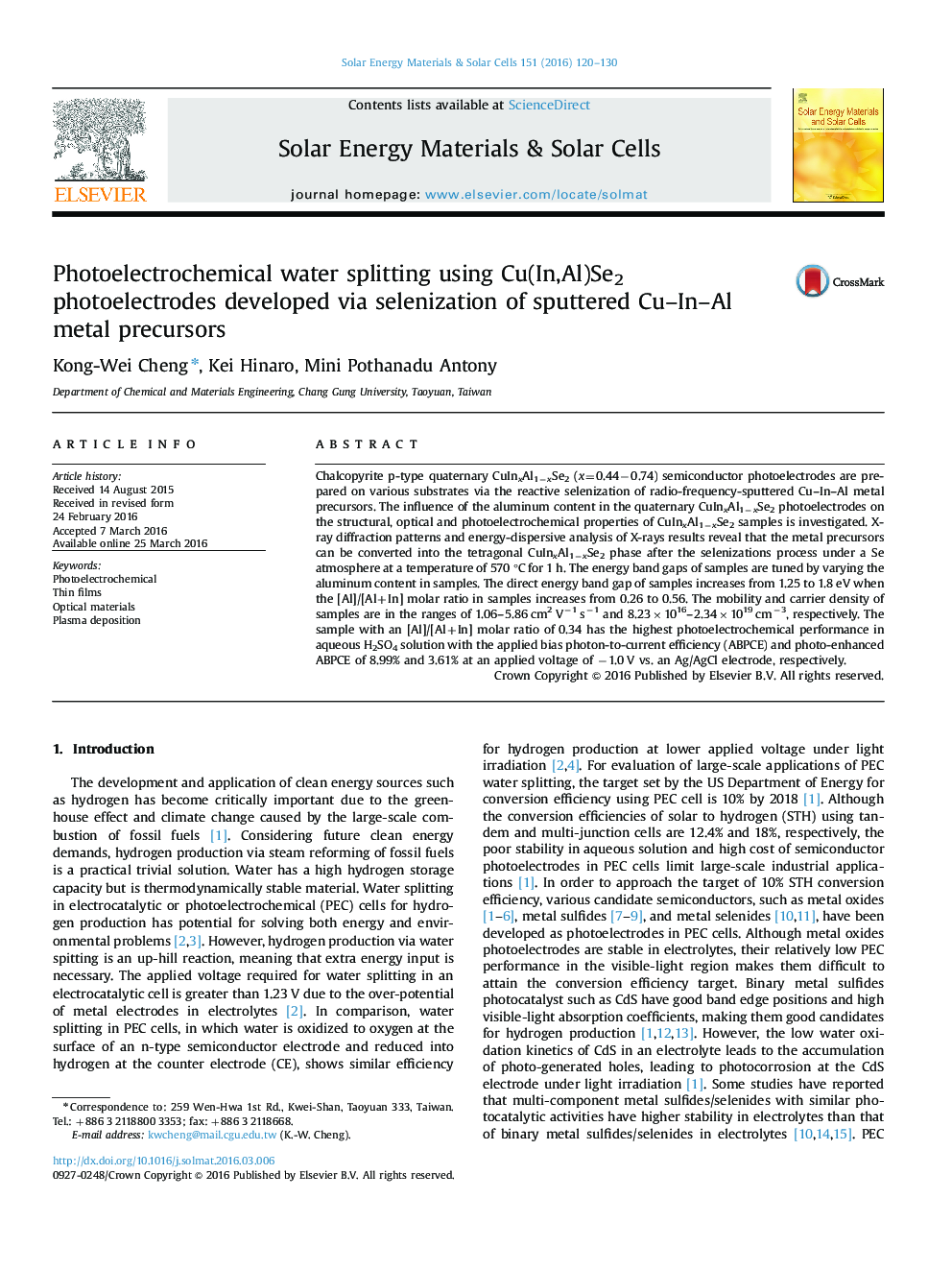| Article ID | Journal | Published Year | Pages | File Type |
|---|---|---|---|---|
| 77611 | Solar Energy Materials and Solar Cells | 2016 | 11 Pages |
•CIAS film was prepared via selenization of sputtered Cu–In–Al metal precursors.•The direct energy band gaps of CIAS samples lie in the range of 1.25–1.80 eV.•CIAS sample with [Al]/[Al+In] ratio of 0.34 has highest PEC performance.•The highest value of applied-bias-photon-to-current efficiency for CIAS is 8.99%.
Chalcopyrite p-type quaternary CuInxAl1−xSe2 (x=0.44−0.74) semiconductor photoelectrodes are prepared on various substrates via the reactive selenization of radio-frequency-sputtered Cu–In–Al metal precursors. The influence of the aluminum content in the quaternary CuInxAl1−xSe2 photoelectrodes on the structural, optical and photoelectrochemical properties of CuInxAl1−xSe2 samples is investigated. X-ray diffraction patterns and energy-dispersive analysis of X-rays results reveal that the metal precursors can be converted into the tetragonal CuInxAl1−xSe2 phase after the selenizations process under a Se atmosphere at a temperature of 570 °C for 1 h. The energy band gaps of samples are tuned by varying the aluminum content in samples. The direct energy band gap of samples increases from 1.25 to 1.8 eV when the [Al]/[Al+In] molar ratio in samples increases from 0.26 to 0.56. The mobility and carrier density of samples are in the ranges of 1.06–5.86 cm2 V−1 s−1 and 8.23×1016–2.34×1019 cm−3, respectively. The sample with an [Al]/[Al+In] molar ratio of 0.34 has the highest photoelectrochemical performance in aqueous H2SO4 solution with the applied bias photon-to-current efficiency (ABPCE) and photo-enhanced ABPCE of 8.99% and 3.61% at an applied voltage of −1.0 V vs. an Ag/AgCl electrode, respectively.
Graphical abstractCu(In,Al)Se2 sample with an [Al]/[Al+In] molar ratio of 0.34 has the highest photoelectrochemical performance in aqueous H2SO4 solution with the applied bias photon-to-current efficiency (ABPCE) and photo-enhanced ABPCE of 8.99% and 3.61% at an applied voltage of −1.0 V vs. an Ag/AgCl electrode, respectively.Figure optionsDownload full-size imageDownload as PowerPoint slide
